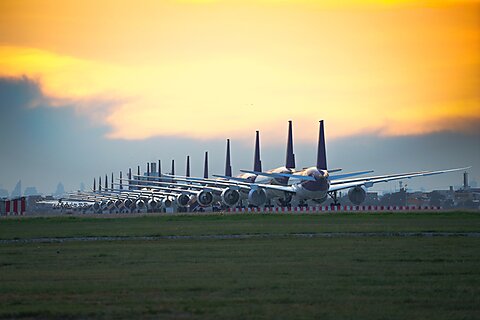The federal government shutdown is damaging the nation’s air traffic control (ATC) operations. Thousands of flights have been delayed due to short staffing at ATC facilities. ATC employees are supposed to be on duty during shutdowns, but some are staying home because they are not being paid.
We’ve seen partisan budget battles screw up our aviation system before. A month-long government shutdown during 2018–2019 disrupted East Coast air traffic, and ATC workers were furloughed in 2013, causing thousands of flight delays until a budget deal was agreed.
The core problem is that America’s ATC is run by the government. It does not have to be—dozens of nations have separated their ATC from government budgets and bureaucracies. Canada, for example, privatized its ATC in 1996 as a self-funded nonprofit corporation. The system earns revenues by direct charges on aviation users, without the need for subsidies.
The US ATC system, run by the Federal Aviation Administration (FAA), suffers from politicized decisions on investment, employment, and restructuring. By contrast, the private Canadian system has delivered safe, efficient, and innovative services for three decades.
America is losing ground as aviation demand grows and the skies become increasingly crowded. Our ATC system has been short-staffed for years due to congressional and FAA mismanagement. While Canada and other countries are pursuing innovations such as remote towers, the FAA is excessively risk-averse and falling behind.
A tragic crash in Washington, DC, numerous near-collisions, and equipment outages have raised concerns about ATC safety and highlighted how backward our system is. One international aviation think tank observed that for “a world leader in so many advanced technologies, the United States’ exposure to ancient moribund ones in the air traffic control sector almost beggars belief.”
A 2023 expert report on US aviation safety noted,
Recent Congresses have been plagued by recurring gridlock, which undermines the FAA’s ability to effectively perform its mission … This stop-and-start process in Congress has resulted in the disruption of critical activities, notably including the hiring and training of air traffic controllers. It has also slowed down the implementation of key technology modernization programs, delayed thousands of flights, and held up billions of dollars of airport infrastructure investments. This situation makes it extremely difficult for the FAA to effectively conduct long-term business planning and execution.
The Government Accountability Office warned last year that “FAA actions are urgently needed to modernize aging systems.” We do need FAA actions, but we also need action by the White House and Congress to pursue fundamental restructuring.
Transportation Secretary Sean Duffy should reconsider his timid positioning on ATC and embrace Canadian-style reforms. President Trump supported ATC privatization in his first term, and a bill modeled on Canada’s system passed the House Transportation Committee at the time.
In 2017, Trump said that our ATC system was “stuck, painfully, in the past … ancient, broken, antiquated.” In 2025, that is even more painfully obvious. Trump and Duffy should push to separate our ATC from the dysfunctional federal government.















